Revision Rhinoplasty (Secondary Rhinoplasty)
Revision rhinoplasty is a corrective surgery performed when a previous nose job (rhinoplasty) does not yield the desired results or creates functional issues. This procedure aims to meet the patient’s expectations by providing both aesthetic and functional improvements.
Take the First Step Now
Free Preliminary Consultation
Schedule your free initial consultation with Prof. Dr. Mustafa Deniz Yılmaz now. Take the first step in your treatment process and let’s start your journey to regain your health with personalized solutions.
What is Revision Rhinoplasty?
Revision rhinoplasty is a second (or additional) surgical intervention performed to correct or enhance the outcomes of a prior rhinoplasty. This type of surgery may be necessary when aesthetic expectations are not met, breathing problems persist, or new deformities appear after the initial surgery.
These surgeries are often more complex than the initial nose operation and should be performed by an experienced surgeon.
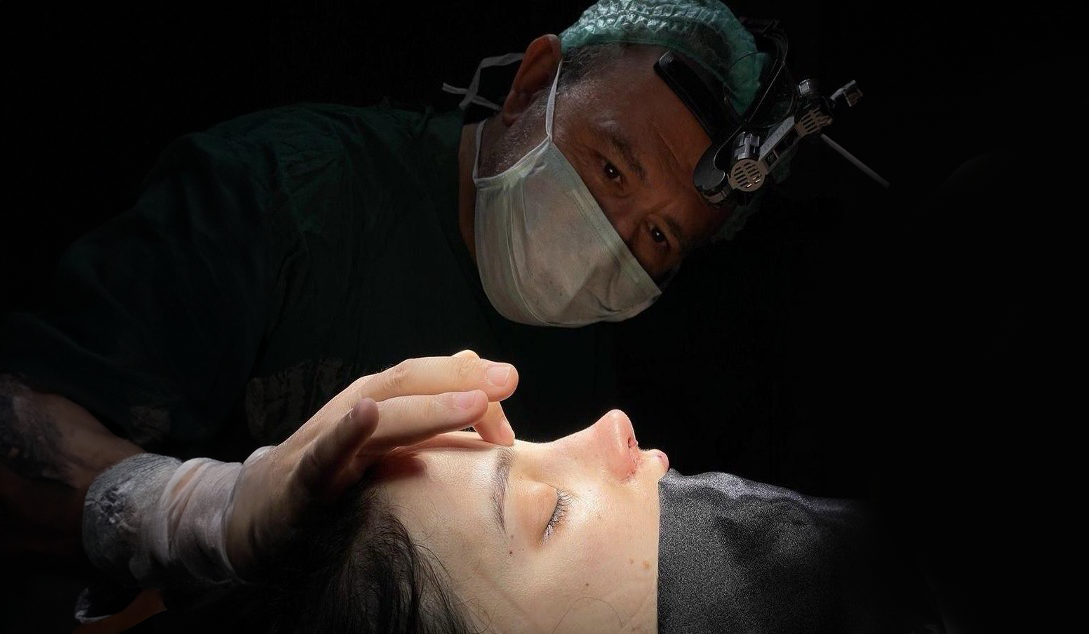
Why is Revision Rhinoplasty Necessary?
- Failure to meet aesthetic expectations in the initial surgery
- Persistent breathing issues or new breathing difficulties
- Nasal deformities or asymmetry
- Poor healing or collapse of cartilage or bone tissue
- Complications that arise after surgery (such as infection or scarring)
1. Failure to Meet Aesthetic Expectations
The shape of the nose after the initial surgery may not meet the patient’s expectations. Aesthetic issues such as nasal deformities, asymmetry, a drooping nasal tip, or an undesirable appearance along the nasal bridge can emerge.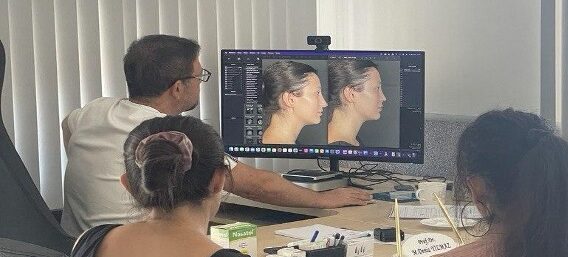
2. Breathing Issues
After the initial surgery, breathing difficulties may arise due to airway narrowing, septal deviation, or valve (nasal wing) problems, or pre-existing breathing issues may remain unresolved. Revision rhinoplasty can be performed to address these problems.
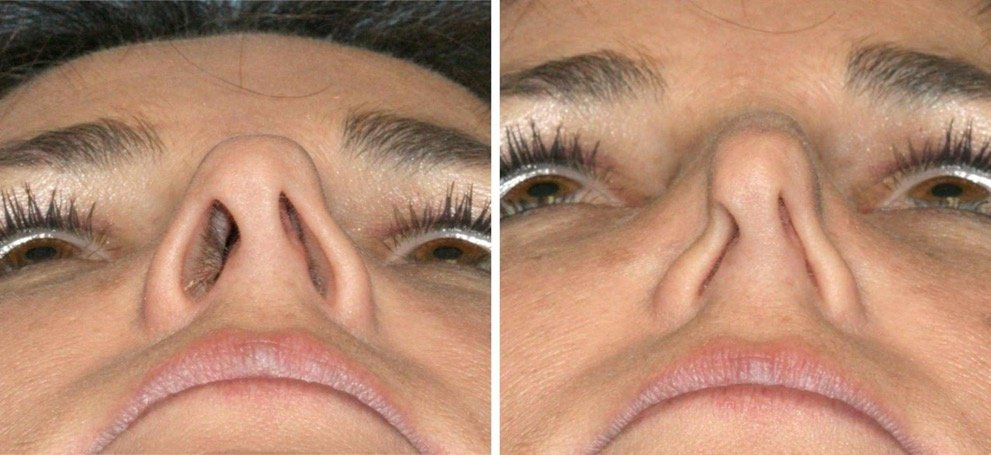
3. Nasal Deformities
After surgery, deformities such as collapse of the nasal structure, excessive thinning, or widening of the nasal tip may develop. This can lead to both aesthetic and functional issues.
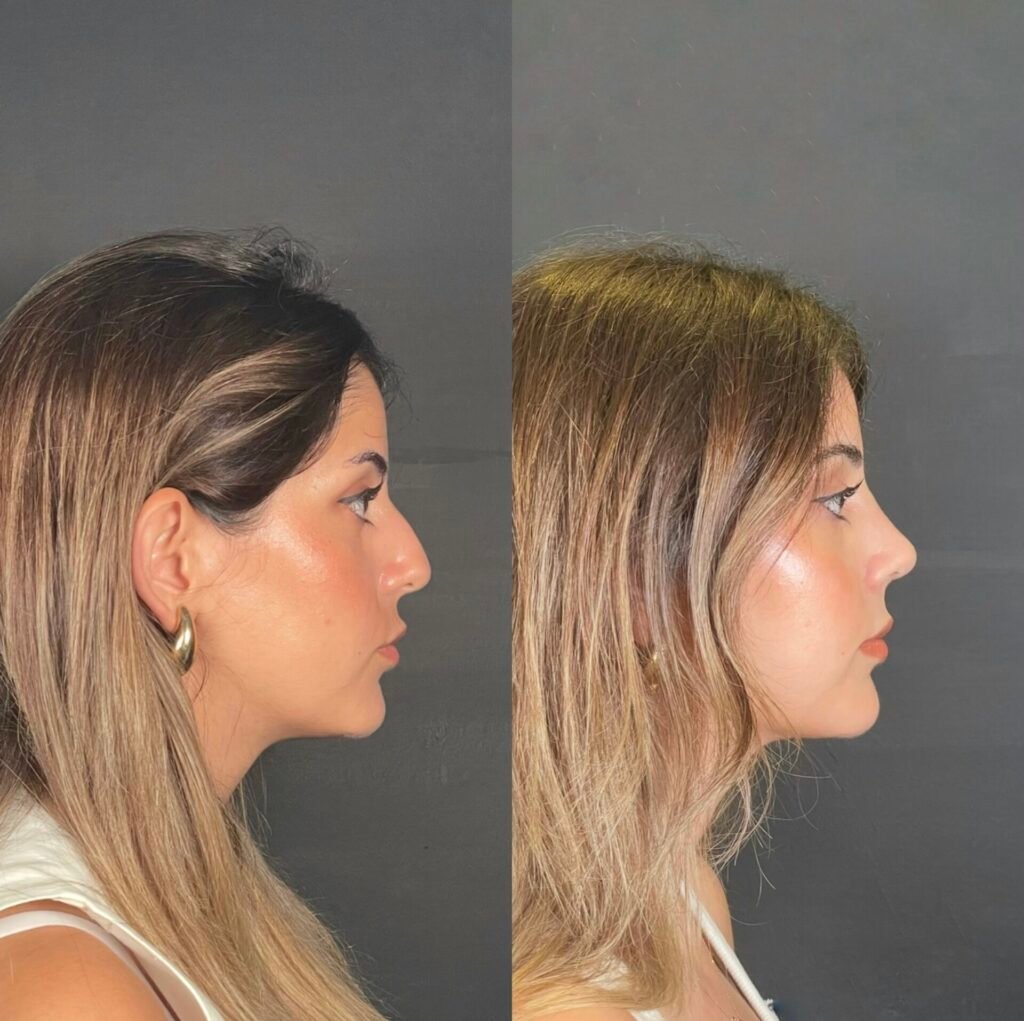
4. Scars and Scar Tissue
Excessive scarring or the formation of scar tissue inside or outside the nose can occur after the initial surgery. This scar tissue can distort the nasal structure, leading to aesthetic and functional problems.
5. Insufficient Support of Cartilage or Bone Tissue
If the cartilage or bone structure of the nose is not adequately supported during the first surgery, issues such as nasal collapse or deformities of the nasal tip may arise.

6. Unexpected Issues During the Healing Process
During the healing process, cartilage or bone movements, scar tissue formation, or other complications within the nose can negatively impact both aesthetic and functional outcomes.
7. Post-Surgical Trauma or Injury
Any trauma or impact to the nose following the initial surgery can cause deformities and aesthetic issues, which may necessitate revision rhinoplasty.
8. Insufficient or Excessive Correction
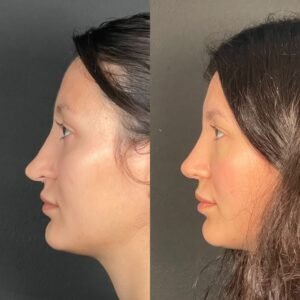
The corrections made during the initial rhinoplasty may be inadequate or overly excessive. For example, the nasal tip might have been raised too high, or the nasal bridge thinned too much.
Revision rhinoplasty is a corrective surgery performed to address these types of aesthetic and functional issues. The goal of the surgery is to enhance the patient’s satisfaction with both the appearance and functionality of the nose.
Frequently Asked Questions About Revision Rhinoplasty:
When should revision rhinoplasty be performed?
Ideally, it is recommended to wait at least 12-18 months after the initial surgery before undergoing revision rhinoplasty. This period allows for the complete healing of the nasal tissues and for the final shape to fully manifest.
Is Revision Rhinoplasty a Difficult Surgery?
Yes, revision rhinoplasty is generally considered a difficult surgery. There are several reasons why it is more complex and challenging than the initial rhinoplasty:
- More Complex Anatomical Conditions
- During the first surgery, the structures inside the nose (cartilage, bone, and soft tissues) may have been altered or removed. This means the surgeon is left with limited or sometimes damaged tissue to work with. This situation increases the technical difficulty of the surgery.
- Scar Tissue
- After the initial surgery, scar tissue forms in the nose. This scar tissue can make the surgeon’s work more difficult, as scar tissue heals and hardens differently from normal tissue. Additionally, the nose’s anatomy may have changed due to the scar tissue, making the surgery even more challenging.
- Tissue Deficiency
- If cartilage or bone was removed during the initial surgery, revision rhinoplasty may require the use of graft material (such as cartilage taken from the ear, rib, or another part of the body) to replace the missing tissue. This adds to the complexity of the procedure.
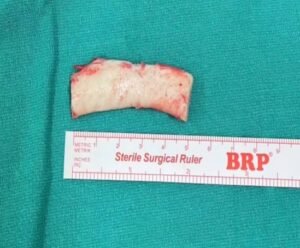
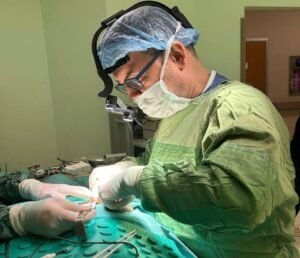
- Functional Challenges
- In revision rhinoplasty, in addition to aesthetic corrections, the function of the nose may also need to be addressed. This is especially important when addressing breathing issues. Problems such as nasal valve insufficiency or septal deviation require the surgeon to make careful adjustments.
- Increased Patient Expectations
- Revision rhinoplasty is usually performed because the patient was dissatisfied with the outcome of the initial surgery. As a result, patient expectations are often higher, and the surgeon needs to take extra care to meet those expectations.
- Longer Recovery Time
- The recovery period for revision rhinoplasty may be longer than that of a primary rhinoplasty due to more tissue work, healing of scar tissue, and the adaptation process of the grafts used.
- Risk of Additional Surgeries
- In some cases, revision rhinoplasty may require multiple surgeries to achieve the best result. This poses an additional challenge for the surgeon because tissue changes and scar tissue can reform after each surgery.
For these reasons, revision rhinoplasty should be performed by an experienced surgeon skilled in managing these complex cases. The surgeon’s expertise and experience directly affect the success of the surgery and the risk of complications.
Is Revision Rhinoplasty Risky?
Yes, revision rhinoplasty carries certain risks. These risks include both general surgical risks as well as specific risks related to revision rhinoplasty. Here are the main risks associated with revision rhinoplasty:
General Surgical Risks
- Infection: As with any surgery, there is a risk of infection during or after revision rhinoplasty. Post-surgery care and the use of antibiotics are important to reduce this risk.
- Bleeding: Nasal bleeding may occur during or after the surgery. This can usually be controlled, but in rare cases, serious bleeding may require intervention.
- Anesthesia Risks: The anesthesia used during the surgery can pose risks for certain patients. Anesthesia-related complications are rare but can be serious.
Risks Specific to Revision Rhinoplasty
- Scarring: Due to the presence of scar tissue from the initial surgery, there is an increased risk of new scar formation during revision rhinoplasty. These scars can affect the appearance of the nose or impair its function.
- Tissue Damage: Changes and weaknesses in the nasal tissues after the initial surgery may make these tissues more prone to damage during the revision surgery.
- Inability to Support the Nasal Structure: If cartilage or bone was removed during the first surgery, there may be a risk that the nasal structure cannot be adequately supported during the revision. This can lead to complications such as nasal collapse or a weakened nasal tip.
- Functional Issues: Interventions aimed at improving the airways during the surgery may not always achieve the desired effect, or they may lead to new breathing problems.
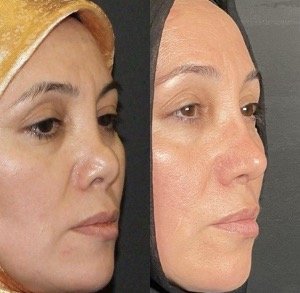
Aesthetic and Shape-Related Risks
- Asymmetry and Shape Deformities: The shape or symmetry of the nose may not be corrected as desired during the revision surgery. This may require further corrective surgeries.
- Sensory Changes: There may be temporary or permanent sensory changes (numbness or pain) in the nose or surrounding areas. This usually improves over time, but in some cases, it may be permanent.
- Longer Recovery Time: The recovery period after revision rhinoplasty may be longer and more complicated than after primary rhinoplasty. Swelling and bruising may persist longer, and the final results may take more time to appear.
- Inadequate Correction: In some cases, the desired results may not be achieved after revision rhinoplasty, which may require additional surgeries.
Aesthetic and Psychological Risks
- Patient Dissatisfaction: If the desired results are not achieved after revision rhinoplasty, the patient may experience dissatisfaction. This can negatively affect the patient’s psychological well-being and self-confidence.
- Social and Professional Impact: The extended recovery period and any aesthetic issues that arise during recovery may negatively affect the patient’s social and professional life.
Revision rhinoplasty can be a risky procedure, but when performed by an experienced surgeon, these risks can be minimized. It is important for patients to discuss all risks, expectations, and potential outcomes in detail with their surgeon before the surgery. This helps increase the chances of success and reduces the risk of complications.
What is the recovery process like after revision rhinoplasty?
The recovery process after revision rhinoplasty is generally longer and more complex compared to primary rhinoplasty. This process can vary depending on the extent of the changes made to the nasal structure and the patient’s overall health. Here’s what you need to know about the recovery process after revision rhinoplasty:
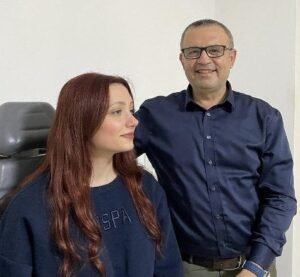
First Days After Surgery
- Swelling and Bruising: Swelling and bruising around the nose and eyes may occur immediately after surgery. This typically peaks in the first few days and usually decreases within 1-2 weeks. However, swelling after revision rhinoplasty may last longer compared to primary rhinoplasty.
- Pain and Discomfort: Mild to moderate pain and discomfort are normal. These can be managed with pain medications prescribed by your doctor.
- Nasal Congestion: Nasal congestion may occur due to the packing or splints placed inside the nose. This will decrease once the packing is removed, usually a few days after surgery.
First Week
- Removal of Packing: The nasal packing is typically removed 5 days after surgery. This will relieve pressure and discomfort in the nasal area.
- Removal of Stitches: If external stitches were used, they are generally removed 5-7 days after surgery. Internal stitches usually dissolve on their own.
First Month
- Reduction of Swelling: Swelling gradually decreases, but slight swelling may persist for a few months before the nose shape fully settles. The tip of the nose often takes the longest to heal.
- Nasal Dryness and Crusting: Dryness and crusting may occur inside the nose. Your doctor may recommend nasal irrigation solutions or moisturizing sprays to help relieve this condition.
- Sensory Changes: There may be temporary numbness or sensory changes in the nose and surrounding areas. This typically improves over time but may last for several months in some cases.
First 3-6 Months
- Slow Healing: Most of the swelling will subside during this period, but the nose shape may not be completely settled yet. It is important to be patient, as the final results typically appear after several months.
- Breathing Function: If breathing problems were also addressed during the surgery, breathing function usually improves during this period. However, full recovery of breathing may take several months.
- Activities: It is recommended to avoid heavy physical activities during the first few months after surgery. Sports, heavy lifting, or activities that could impact the nose should be avoided.
Full Recovery (12-18 Months)
- Final Results: The nose shape and structure will fully settle, and the final result typically takes 12-18 months to appear. During this period, fine adjustments to the nose may still occur.
- Follow-up Appointments: Your doctor will likely schedule follow-up visits at regular intervals after surgery. These visits are important to monitor the recovery process and check for any complications.
Possible Complications
- Additional Surgery May Be Needed: In cases where the desired results are not achieved after revision rhinoplasty, further corrective surgery may be required. This decision is usually made after the nose has completely healed.
Recovery time can vary for each patient, and it is important to be patient. Following your doctor’s instructions can help speed up the recovery process and reduce the risk of complications. Regular follow-up appointments are essential to ensure that the recovery process progresses healthily.
Can the nose require further correction after revision rhinoplasty?
Yes, the outcome of any surgical intervention can sometimes be unpredictable, and in some cases, additional corrections may be necessary. However, revision rhinoplasty is usually performed to fix significant issues, and the need for further surgery is rare.
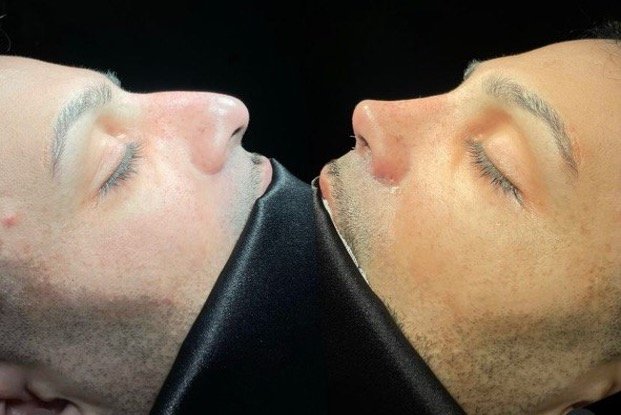
Will there be pain after revision rhinoplasty?
Mild to moderate pain is generally expected after revision rhinoplasty. The pain can be managed with pain medications prescribed by the surgeon. It is normal to experience some discomfort as part of the recovery process.
What is the cost of revision rhinoplasty?
Revision rhinoplasty is generally more expensive than primary rhinoplasty. The cost varies depending on the surgeon’s experience, the complexity of the surgery, and the techniques used. The most accurate information regarding the price can be obtained during the surgical consultation.
We came from Almaty on vacation, and my son started having ear pain from the very first day. They recommended drops and medications, but nothing helped. We stumbled across a doctor online and decided to take a chance. She turned out to be wonderful, and after the first dose of medication, my son felt better. Within a week, there was no trace of the infection. Special thanks to the translator for her care, understanding, and professionalism.
I was suffering from empty nose syndrome. For those who don't know, I should say that almost all of my nasal tissue was removed. It is a very bad disease. I went to 100 ENT doctors in Istanbul and they couldn't find a solution. Finally, I found Deniz Hoca, who is an expert in this field, and he took cartilage from my rib and performed the surgery and I got better. Thank you very much for everything.
I had a tonsillectomy performed by our doctor, Mustafa Deniz Yılmaz. The surgery went smoothly, and although it's said to be more difficult for adults, I recovered very quickly. I'm so glad I chose Mustafa.
Hello, they told me that my parotid gland needed to be removed. I went to so many doctors that I finally decided on Dr. Mustafa. I am glad I chose Dr. Mustafa. You do not need to look for a doctor, you can choose my doctor with peace of mind without any worries.
I had a nose surgery 9 months ago by Mustafa Deniz Hoca. Both he and his team are always in touch with you before and after the surgery and provide detailed answers to questions. I am very pleased with my nose in terms of aesthetic appearance and health. Thank you and your entire team for everything.
First of all, I would like to thank my instructor Mustafa Deniz Yılmaz for his efforts. I had a nose surgery about 4 months ago. Like everyone else, I had the opportunity to research and compare the videos taken by many people who had this surgery and the perspectives of experts in their field on nose surgeries. I am very happy that I made the right decision and had surgery with my instructor Mustafa. I sincerely recommend my instructor Mustafa to everyone who wants to breathe both aesthetically and healthily and has problems.
I had a nose surgery in February. They never failed to show interest from the moment I entered the clinic until the last moment. No one even understands that I had plastic surgery. Mr. Deniz is one of the best in his field. I recommend it to everyone.
I had a nose surgery 3.5 months ago. The surgery and recovery process went great. There are a few things you should pay attention to after the surgery, they don't affect your quality of life too much. The doctor makes you feel very comfortable about that because it's not as complicated as you think. Other than that, I can breathe easily now, which is the most important thing. Also, Assistant Ayşegül Hanım gets back to you directly at any time of the day, no matter how long it has been since the surgery, if you have any questions. I'm very happy that I chose the right doctor.
I met Dr. Deniz upon the recommendation of another patient. He performed my ear surgery approximately 6 months ago with the diagnosis of Cholestatum. His care and follow-up of his patient both before and after the surgery for 6 months is commendable. I would also like to thank Dr. Deniz for his confidence in his patient and his friendly approach. I am in a much better position after the surgery, both in terms of hearing and risk of infection. I would like to thank Prof. Dr. Mustafa Deniz Yılmaz and his team.
I went to my dear teacher Deniz because of my breathing difficulties. He and his team were very cheerful and caring. My surgery was very successful and our doctor Deniz and his team were always caring throughout the process. We definitely recommend them, they are very knowledgeable, you will never regret it.
I had been experiencing a constant runny nose for a while. I decided to go to a private ENT specialist and I took a very good step. My doctor told me I had vasomotor rhinitis, which I had never heard of before. They had always given me allergy medication and sent me there. Mustafa Deniz made me feel very comfortable with the nasal wash he recommended. I had been using allergy medication unnecessarily for so long. You can go with peace of mind 😊.
I had a nose surgery 6 months ago. I am very pleased with the result. Mr. Deniz is a successful doctor in his field. You can choose him with peace of mind.

Anesthesia Type: General

Operation Time: 2-3 Hours

Pain: Mild

Length of hospital stay: 1 night

Recovery Time 7 days
Fill in the Form
Let us call you
Take the First Step Now
Free Preliminary Consultation
Schedule your free initial consultation with Prof. Dr. Mustafa Deniz Yılmaz now. Take the first step in your treatment process and let’s start your journey to regain your health with personalized solutions.




